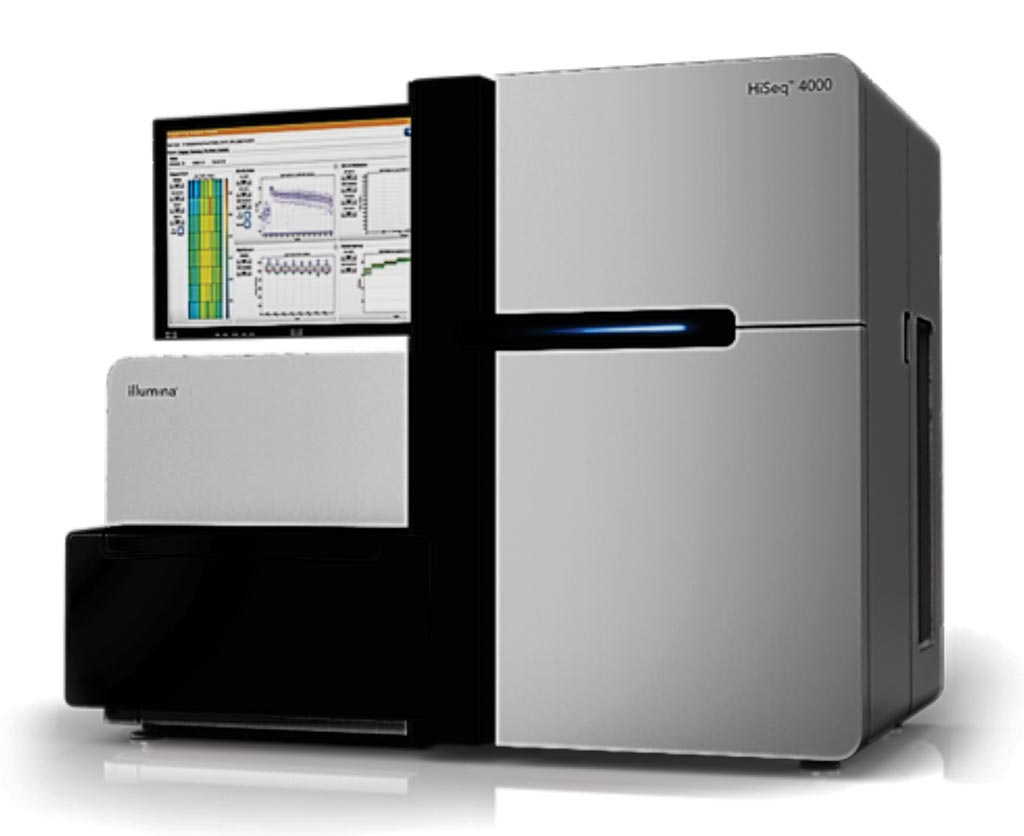Molecular Tests Equivalent to Bone Marrow Analysis for MM
By LabMedica International staff writers
Posted on 09 May 2018
Multiple myeloma (MM) is a hematologic malignancy characterized by a bone marrow infiltration of clonal plasma cells with heterogeneous involvement in many areas of the bone marrow.Posted on 09 May 2018
Liquid biopsies including circulating tumor cells (CTCs) and cell-free DNA (cfDNA) have enabled minimally invasive characterization of many cancers, but are rarely analyzed together. Understanding the detectability and genomic concordance of CTCs and cfDNA may inform their use in guiding cancer precision medicine.

Image: The HiSeq 4000 Systems leverage innovative patterned flow cell technology to provide rapid, high-performance sequencing (Photo courtesy of Illumina).
A team of scientists led by those at the Dana-Farber Cancer Institute (Boston, MA, USA) examined cfDNA from 107 patients and CTCs from 56 patients. The scientists then matched up cfDNA with bone marrow data from nine patients, and compared all three forms of biopsy in four additional patients. DNA was extracted using circulating nucleic acid kits from 2 to 6 mL of plasma. CTCs and bone marrow plasma cells were isolated using CD138 bead selection after Ficoll of whole blood and bone marrow samples, respectively. Peripheral blood mononuclear cell (PBMC) negative fractions were used for germline DNA.
Genomic DNA was extracted using DNA extraction kit. Samples were prepared for ultra-low pass whole-genome sequencing (ULP-WGS) and up to 96 libraries were pooled and sequenced using 100 bp paired-end runs over 1× lane on a HiSeq2500. Hybrid capture of cfDNA libraries was performed using the Illumina Nextera Rapid Capture Exome kit with custom blocking oligos. Sequencing was performed using 100 bp paired-end runs on an Illumina HiSeq4000 in high-output mode with two to four libraries per lane.
The investigators report that using ultra-low pass whole-genome sequencing; and found both tumor fractions correlate with disease progression. Applying whole-exome sequencing (WES) to cfDNA, CTCs, and matched tumor biopsies, they found concordance in clonal somatic mutations (~99%) and copy number alterations (~81%) between liquid and tumor biopsies. Importantly, analyzing CTCs and cfDNA together enables cross-validation of mutations, uncovers mutations exclusive to either CTCs or cfDNA, and allows blood-based tumor profiling in a greater fraction of patients. The study demonstrates the utility of analyzing both CTCs and cfDNA in MM.
Irene Ghobrial, MD, a medical oncologist and a senior author of the study said, “Until now, we haven't had a good way to measure how multiple myeloma cell populations evolve from precursor stages to diagnosed disease, and then respond to treatments. This is where blood biopsies can make a huge difference, extending our understanding of multiple myeloma, and really giving us a timeline of how the disease progresses and responds to therapy.” The study was published on April 27, 2018, in the journal Nature Communications.
Related Links:
Dana-Farber Cancer Institute














